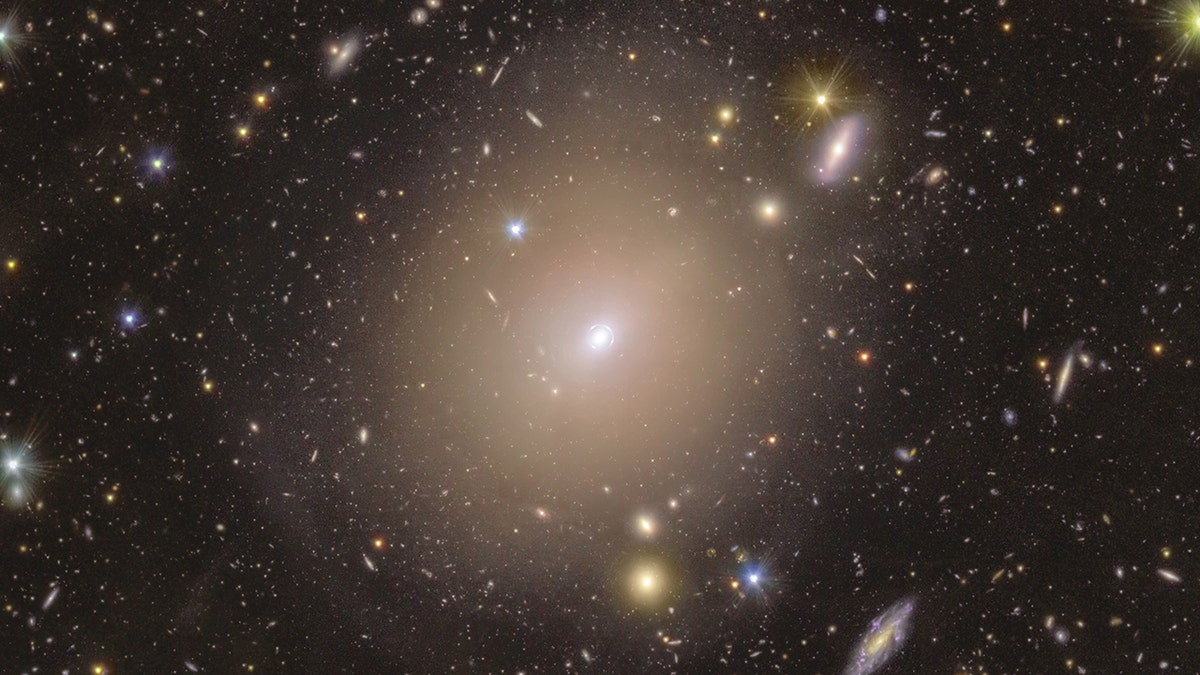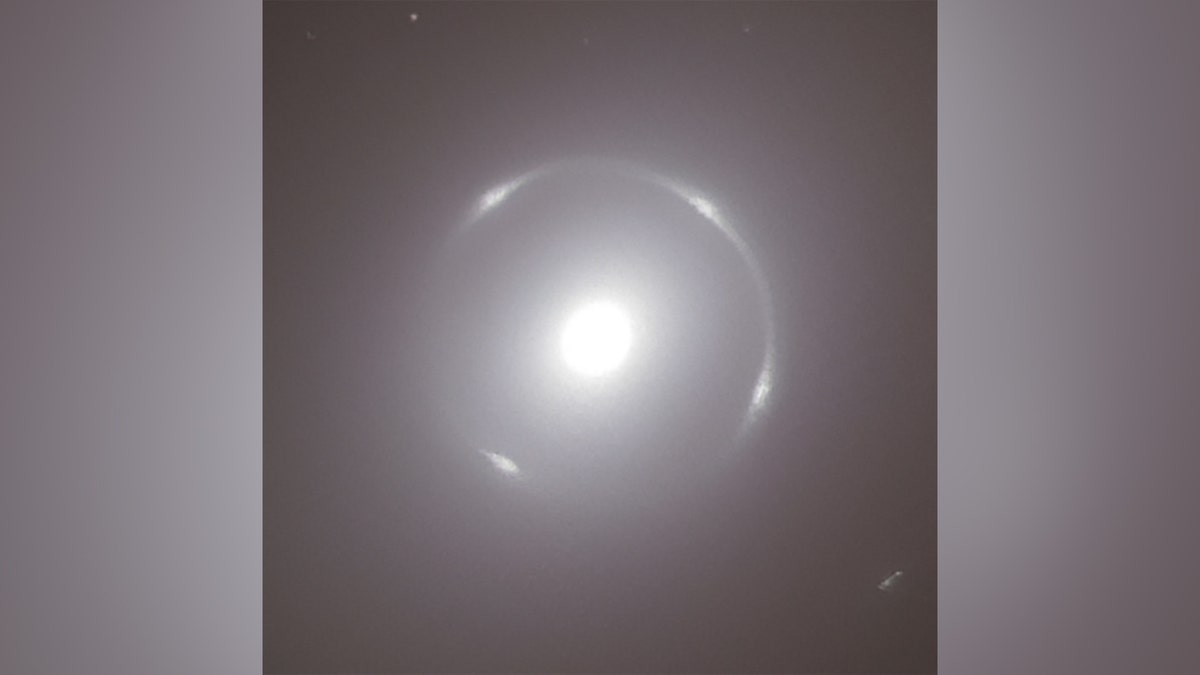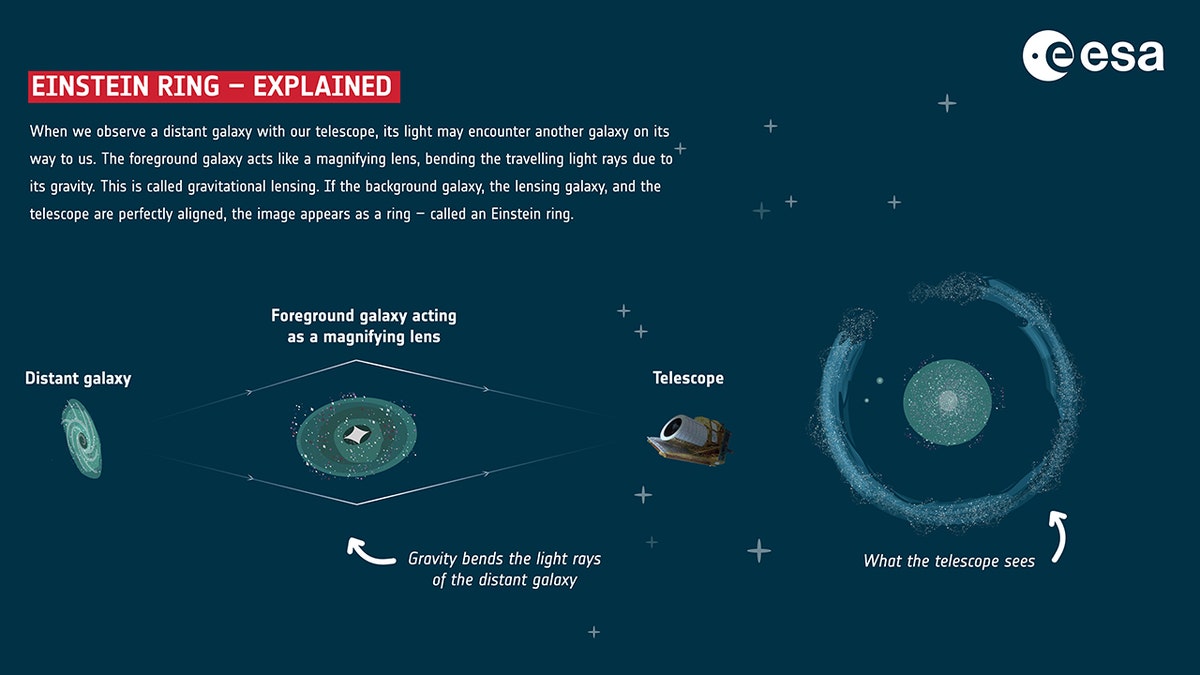ESA’s space telescope Euclid discovers ‘astonishing’ Einstein ring
ESA’s space telescope Euclid discovers ‘astonishing’ Einstein ring
Author:
Published on: 2025-02-11 02:52:43
Source: Technology News Articles on Fox News
Disclaimer:All rights are owned by the respective creators. No copyright infringement is intended.
The European Space Agency (ESA) said Monday that its Euclid space telescope has detected a rare bright halo of light around a nearby galaxy.
Known as an Einstein ring, the halo was captured in photos encircling a galaxy nearly 590 million light-years away, which is considered close by cosmic standards. A single light-year is measured at 5.8 trillion miles.
While astronomers have known about the galaxy where the phenomenon was captured for over a century, they were surprised when Euclid revealed the bright glowing ring,
Euclid blasted off from Cape Canaveral, Florida on July 1, 2023, to begin a six-year mission to explore the dark universe.
GIANT STELLAR NURSERY REVEALED IN NEW IMAGES FROM ESA’S SPACE TELESCOPE

A sea of colorful stars and galaxies appear to swim in the vast blackness of space around a hazy halo at center stage. In the middle of the image, the fuzzy-looking bulb of light in a warm shade of yellow extends around a small bright spot, nestled within a thin light circle that appears to be drawn closely around it. (ESA/Euclid/Euclid Consortium/NASA, image processing by J.-C. Cuillandre, G. Anselmi, T. Li)
But before the space telescope could begin its survey of the universe, scientists had to ensure everything onboard was working properly. During the early phase of testing, which took place in September 2023, Euclid sent images back to Earth.
The ESA said the images were deliberately out of focus, but in one of the images, Euclid Archive Scientist Bruno Altieri saw what he believed was a very special phenomenon and decided to look at it a bit closer.
“I look at the data from Euclid as it comes in,” Bruno said in a press release from the ESA. “Even from that first observation, I could see it, but after Euclid made more observations of the area, we could see a perfect Einstein ring. For me, with a lifelong interest in gravitational lensing, that was amazing.”
For most of the population out there, an Einstein Ring is an “extremely rare phenomenon,” the ESA said.
POWERFUL WEBB TELESCOPE SPIES SPECTACULAR STAR BIRTH CLUSTER BEYOND THE MILKY WAY

A thin ring of a perfect circular shape and a piercingly bright white disc in its middle are the protagonists of this image. They stand out against a uniformly colored background of a hazy dark gray. (ESA/Euclid/Euclid Consortium/NASA, image processing by J.-C. Cuillandre, G. Anselmi, T. Li)
When a distant galaxy is observed through a telescope, the light from that galaxy may encounter another galaxy on its way to the telescope. When that happens, the foreground galaxy acts like a magnifying glass, and gravity causes the traveling light rays to bend. When light rays bend, scientists call that gravitational lensing, according to the ESA.
When the background galaxy, lensing galaxy and telescope are in perfect alignment, the image appears as a ring, also known as an Einstein Ring.
The galaxy, called NGC 6506, is about 590 million light-years away, and this is the first time the ring of light around its center has ever been detected.
“All strong lenses are special, because they’re so rare, and they’re incredibly useful scientifically,” Conor O’Riordan of the Max Planck Institute for Astrophysics said. “This one is particularly special, because it’s so close to Earth and the alignment makes it very beautiful.”
POWERFUL WEBB TELESCOPE CAPTURES PHOTOS OF ONE OF THE EARLIEST SUPERNOVA EVER SEEN

The text paragraph explains the principle behind the Einstein rings. (ESA)
Einstein rings are based on physicist Albert Einstein’s general theory of relativity, which predicts that light will bend around objects in space, so they focus the light like giant lenses, ESA said. The phenomenon allows scientists to sometimes see the light from distant galaxies that would otherwise be hidden.
“I find it very intriguing that this ring was observed within a well-known galaxy, which was first discovered in 1884,” Valeria Pettorino, ESA Euclid project scientist, said. “The galaxy has been known to astronomers for a very long time. And yet this ring was never observed before. This demonstrates how powerful Euclid is, finding new things even in places we thought we knew well. This discovery is very encouraging for the future of the Euclid mission and demonstrates its fantastic capabilities.”
Over the course of the mission, scientists expect Euclid will reveal more about the role of gravity in the Universe, as well as the nature of dark energy and dark matter.
CLICK HERE TO GET THE FOX NEWS APP
Euclid will map over a third of the sky and observe billions of galaxies as far as 10 billion light-years away, ESA said. In doing so, scientists expect Euclid to find around 100,000 more strong lenses, though finding one so cosmically close to home and so spectacular, ESA added, “is astonishing.”
“Euclid is going to revolutionize the field, with all this data we’ve never had before,” O’Riordan said.
The Associated Press contributed to this report.
Disclaimer: All rights are owned by the respective creators. No copyright infringement is intended.


